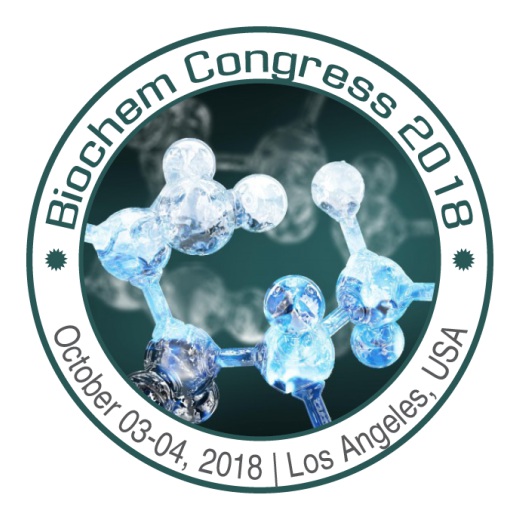4th International Conference on Biochemistry & Metabolomics
Los Angeles, USA

Hailong An
Hebei University of Technology, China
Title: Identification of the calcium-dependent gating and targeted-drug discovery of CaCCs
Biography
Biography: Hailong An
Abstract
Calcium-activated chloride channels (CaCCs) play vital roles in a variety of physiological processes. Transmembrane protein 16A (TMEM16A) has been confirmed as the molecular counterpart of CaCCs which greatly pushes the molecular insights of CaCCs forward. However, the detailed mechanism of Ca2+ binding and activating the channel is still obscure. To identify the calcium binding site, the authors presented a computational approach which combined the fragment homology modeling with molecular dynamics simulation. Our data show that the first intracellular loop serves as a Ca2+ binding site including D439, E444, and E447. The experimental results indicate that a novel residue, E447, plays a key role in Ca2+ binding. Compared with WT TMEM16A, E447Y produces a 30-fold increase in EC50 of Ca2+ activation and leads to a 100-fold increase in Ca2+ concentrations that is needed to fully activate the channel. It is well established that TMEM16A is a drug target in many diseases, including cystic fibrosis, hypertension, asthma, and various tumors. Therefore, identifying potent and specific modulators of the TMEM16A channel is crucial. Here, the authors identified two modulators from the traditional Chinese
medicine, an activator, Ginsenoside Rb1 (GRb1) which can increase the amplitude and frequency of contractions in an isolated guinea pig ileum assay in vivo and serve as a lead compound for the development of novel drugs for the treatment of diseases caused by TMEM16A dysfunction, an inhibitor, matrine which can dramatically inhibit the growth of lung adenocarcinoma tumors in xenografted mice, and may function as an anti-lung adenocarcinoma drug targeting at TMEM16 channels.

